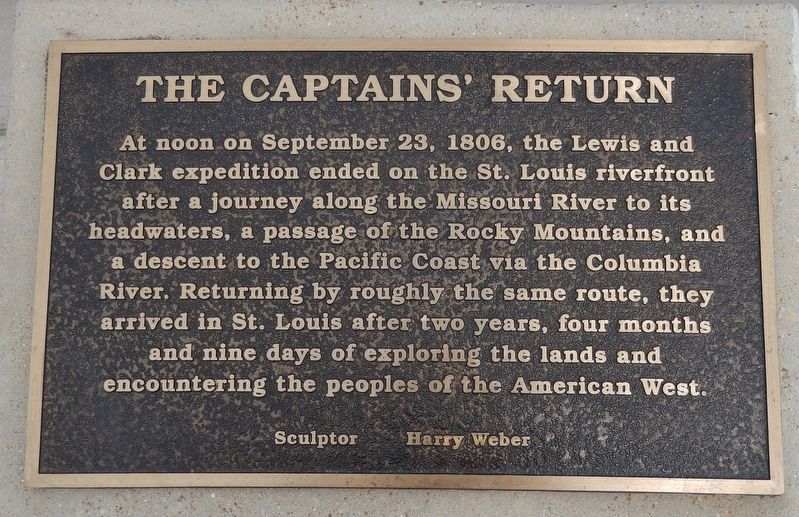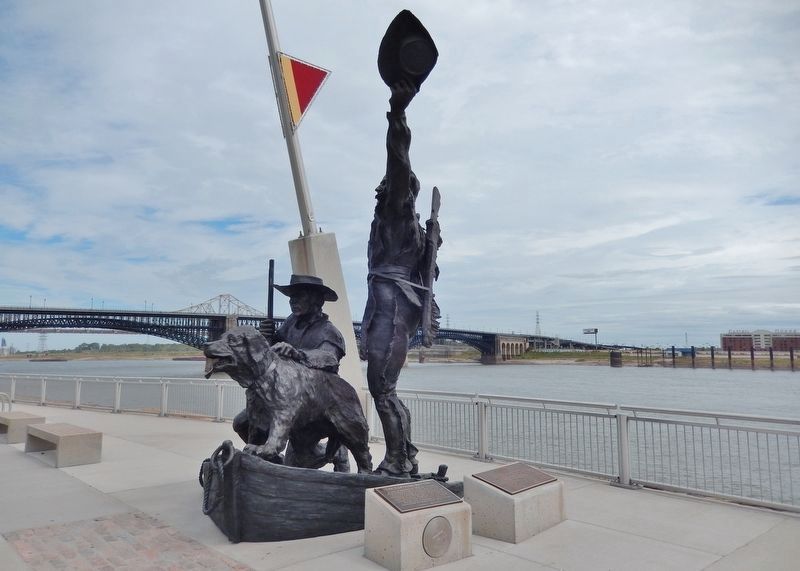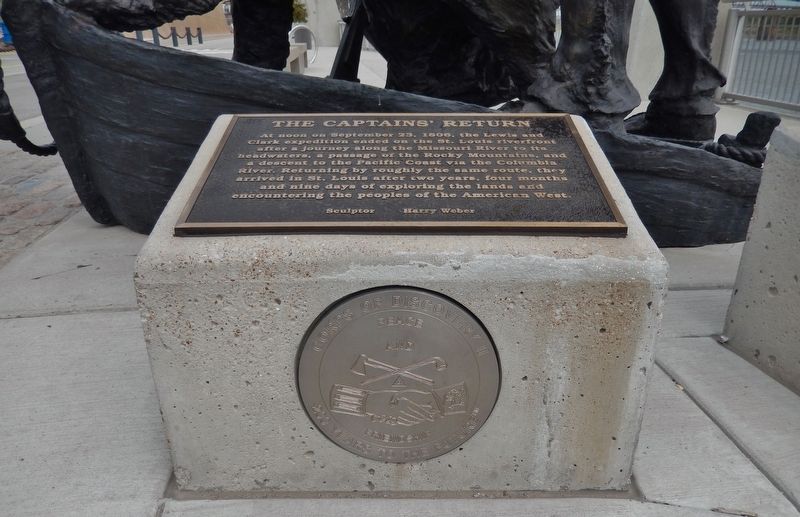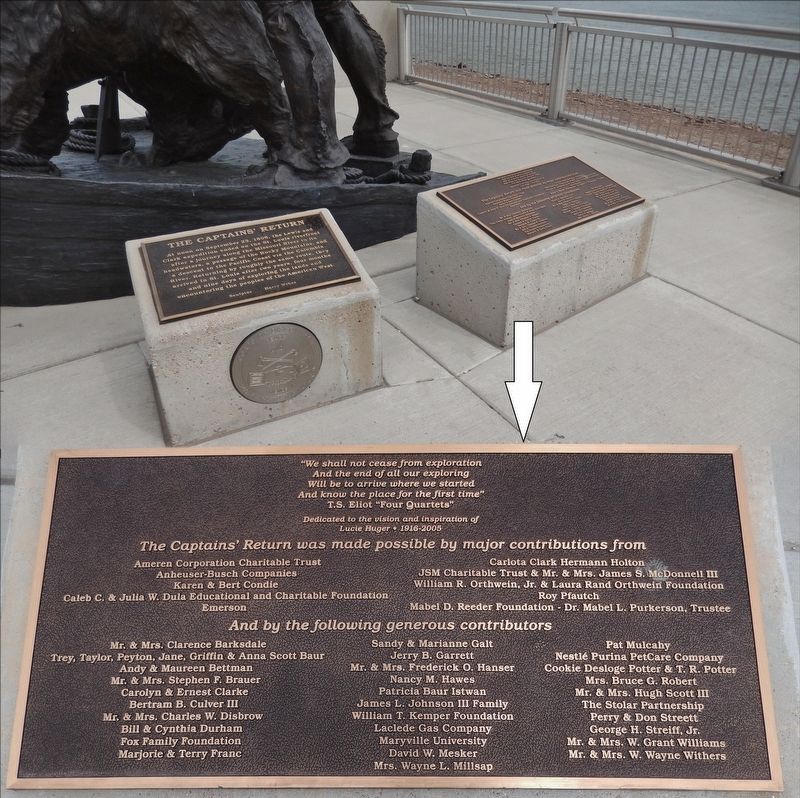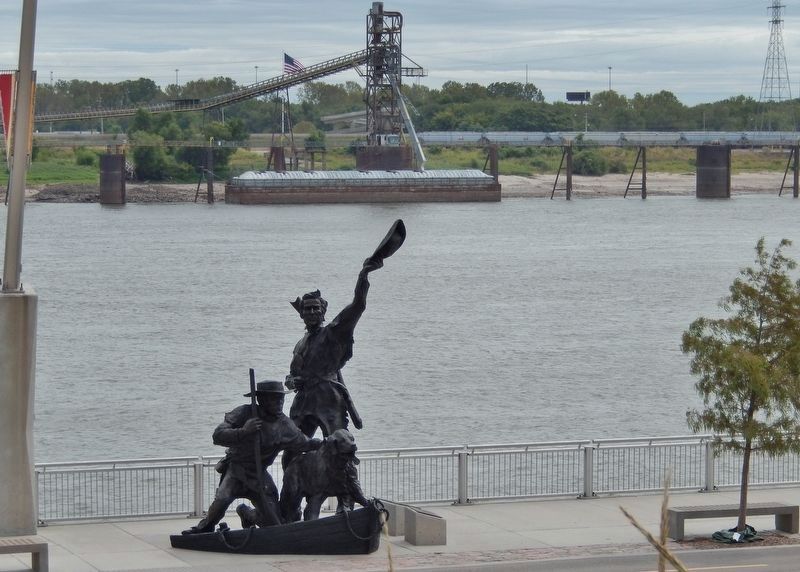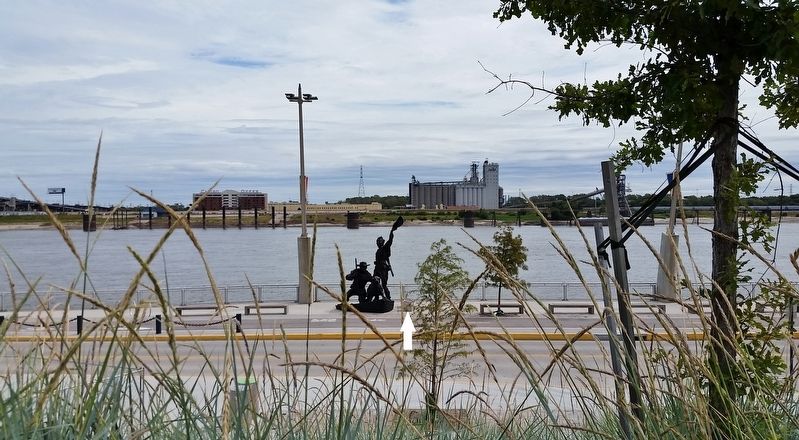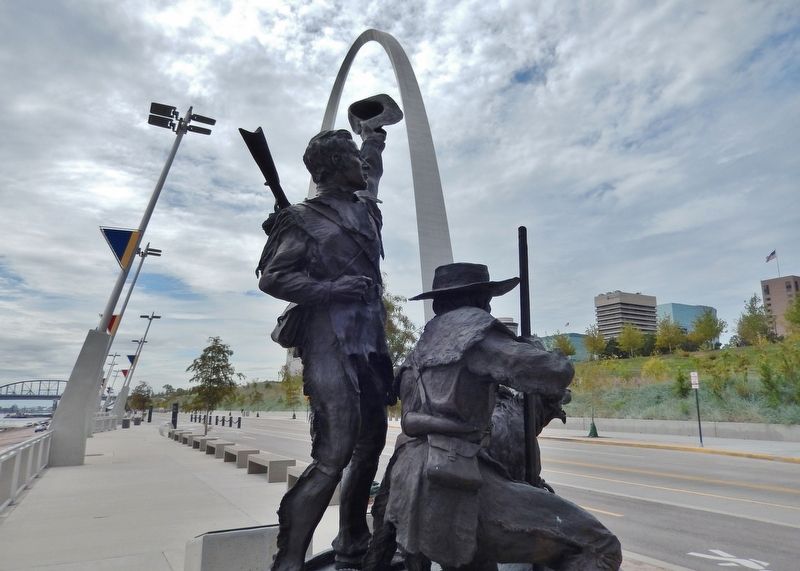Downtown in St. Louis, Missouri — The American Midwest (Upper Plains)
The Captains' Return
At noon on September 23, 1806, the Lewis and Clark expedition ended on the St. Louis riverfront after a journey along the Missouri River to its headwaters, a passage of the Rocky Mountains, and a descent to the Pacific Coast via the Columbia River. Returning by roughly the same route, they arrived in St. Louis after two years, four months and nine days of exploring the lands and encountering the peoples of the American West.
Topics and series. This historical marker is listed in these topic lists: Exploration • Native Americans • Waterways & Vessels. In addition, it is included in the Lewis & Clark Expedition series list. A significant historical date for this entry is September 23, 1806.
Location. 38° 37.598′ N, 90° 10.97′ W. Marker is in St. Louis, Missouri. It is in Downtown. Marker is on North Leonor K Sullivan Boulevard, 0.3 miles south of Laclede's Landing Boulevard, on the left when traveling south. Marker is located on the Mississippi River Walk Path, beside the river, adjacent to the Harry Weber sculpture of Captains Lewis and Clark, and just north of the Gateway Arch. Touch for map. Marker is in this post office area: Saint Louis MO 63102, United States of America. Touch for directions.
Other nearby markers. At least 8 other markers are within walking distance of this marker. Curves Ahead (about 400 feet away, measured in a direct line); Speedy Delivery (about 400 feet away); Gateway to the West (about 400 feet away); Pierre Laclede (about 400 feet away); Action and Reaction (about 500 feet away); Miles of Steamboats (about 500 feet away); The Gateway Arch (about 700 feet away); August 1, 1993 (about 700 feet away). Touch for a list and map of all markers in St. Louis.
More about this marker. Marker is a metal plaque, mounted at ground level on a short pedestal beside the Lewis & Clark sculpture. This marker is included in the Lewis & Clark Expedition marker series.
Also see . . .
1. Lewis and Clark: The Journey Ends. Smithsonian magazine website entry:
On September 23, 1806, Lewis wrote to President Jefferson: “It is with pleasure that I anounce to you the safe arrival of myself and party.... In obedience to your orders we have penitrated the Continent of North America to the Pacific Ocean, and sufficiently explored the interior of the country to affirm with confidence that we have discovered the most practicable rout which dose exist across the continent by means of the navigable branches of the Missouri and Columbia Rivers.” (Submitted on August 28, 2018, by Cosmos Mariner of Cape Canaveral, Florida.)
2. Lewis and Clark return. History website entry:
Amid much public excitement, American explorers Meriwether Lewis and William Clark return to St. Louis, Missouri, from the first recorded overland journey from the Mississippi River to the Pacific coast and back. The Lewis and Clark Expedition had set off more than two years before to explore the territory of the Louisiana Purchase. Even before the U.S. government concluded purchase negotiations with France, President Thomas Jefferson commissioned his private secretary Meriwether Lewis and William Clark, an army captain, to lead an expedition into what is now the U.S. Northwest. On May 14, 1804, the “Corps of Discovery,” featuring 28 men and one woman—a Native American named Sacagawea—left St. Louis for the American interior. (Submitted on August 28, 2018, by Cosmos Mariner of Cape Canaveral, Florida.)
Credits. This page was last revised on January 30, 2023. It was originally submitted on August 26, 2018, by Cosmos Mariner of Cape Canaveral, Florida. This page has been viewed 388 times since then and 22 times this year. Last updated on October 15, 2018, by Devry Becker Jones of Washington, District of Columbia. Photos: 1. submitted on August 27, 2018, by Cosmos Mariner of Cape Canaveral, Florida. 2, 3, 4, 5, 6, 7. submitted on August 28, 2018, by Cosmos Mariner of Cape Canaveral, Florida. • Andrew Ruppenstein was the editor who published this page.
